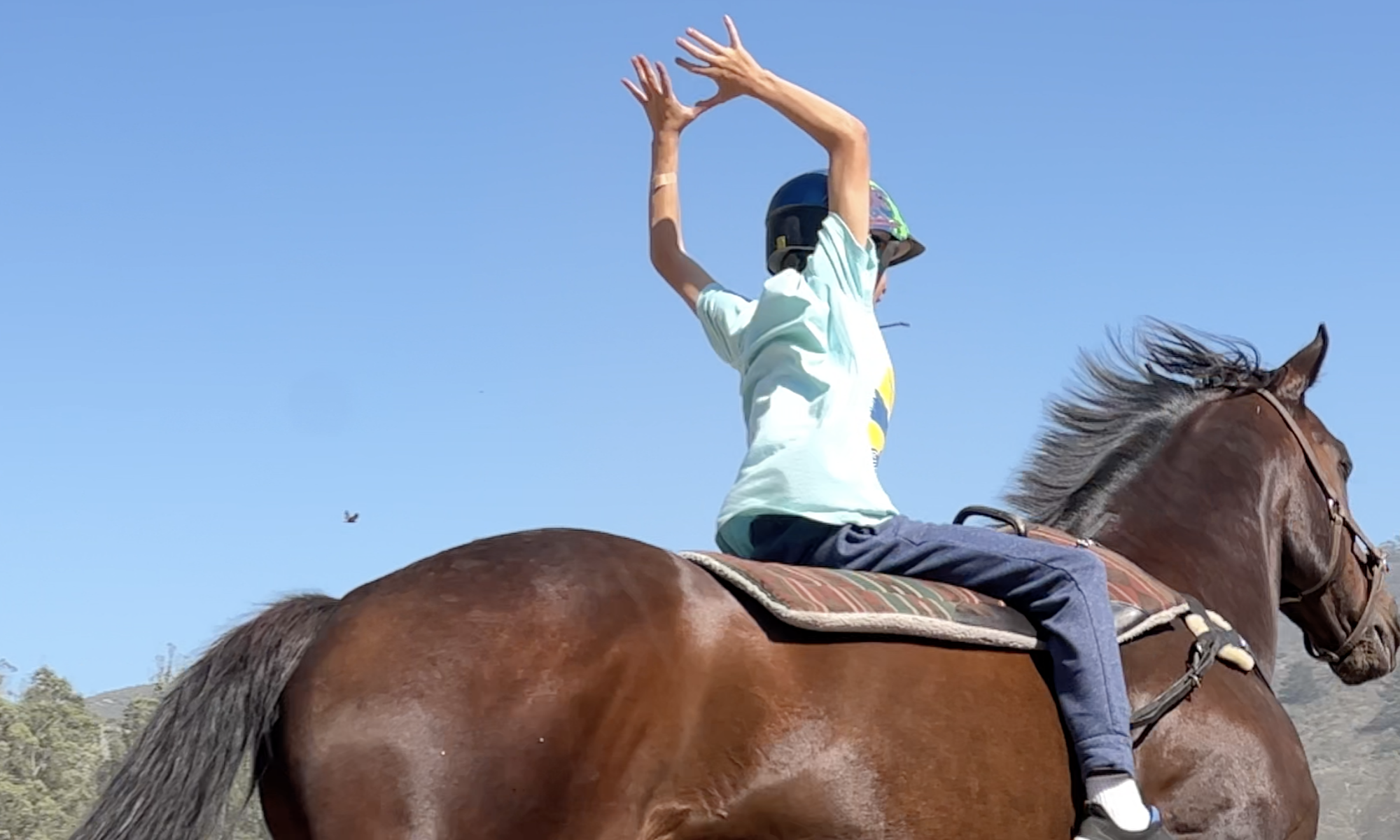I careen down the twisting, narrow road until the red Square Peg Foundation barn appears on my left. I jump out of my truck to open the ranch gate. Inside, horses lounge in their paddocks pestering each other over the fence. Two pygmy goats scavenge for food. And Bridget, an incorrigible miniature horse, terrorizes all who dare to come within three feet of her by baring her teeth or raising a threatening hoof. As I park and make my way to the barn, I am welcomed by the familiar smells and sounds—fresh, sweet alfalfa hay, and horses happily chomping. Here at Square Peg Foundation, I have found a home, a place where I gladly volunteer, sharing my love and knowledge of horses.
The Square Peg Foundation teaches anyone how to ride and care for horses. Kids especially benefit from the experience of being around large animals, and farm animals like Bridget and the goats. I know this from my own experiences growing up as a “barn kid.†I spent long summer days developing my independence and sense of responsibility, with horses as my patient teachers. Now I help students learn the calming ritual of tacking up a horse—grooming, saddling, and bridling. The common thread of Square Peg’s students is a desire to learn more about horses and enjoy riding and being around them. With fourteen years of riding experience, I can assist riders that need extra help, by walking alongside their horse or leading them from another horse. Everyone has the desire to feel safe, and giving a new student that sense of security is empowering. At Square Peg, the main objectives are for riders to find power and strength within themselves, to feel confident and proud of what they learn in each lesson. When I began volunteering for Square Peg, I realized the value of this goal and was eager to contribute, but I did not anticipate the life changing effect it would have on me.
I have spent much of my life learning how to ride and competing in three-day eventing, and hunter-jumpers. Always the fearless and determined rider, I would gallop my horse through the sprinklers in the arena bareback, jumping any obstacle in my path. However, in the cutthroat and costly world of the “A Circuit†I never found a barn where I felt at home. Although the barns where I rode or kept my horse provided excellent instruction, most trainers were concerned with how much money their clients were willing to spend on their next horse. Discouraged by the unethical side of competitive riding, I came to realize that what I truly enjoyed about horses was hanging out at the barn, taking care of them. Finding Square Peg, I discovered a group of people who loved simply being around horses as much as I do. I now have the privilege of helping others discover the activity that brings me so much joy. I have finally found my niche, a little red barn in the hills, a place where “Everyone fitsâ€.





